#david okaes
Text

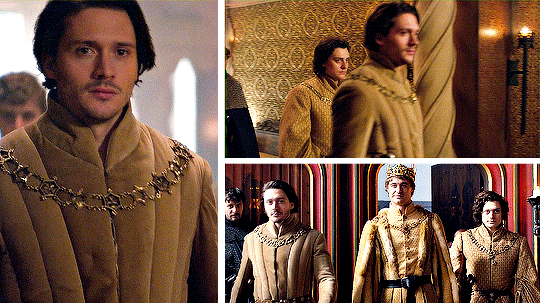
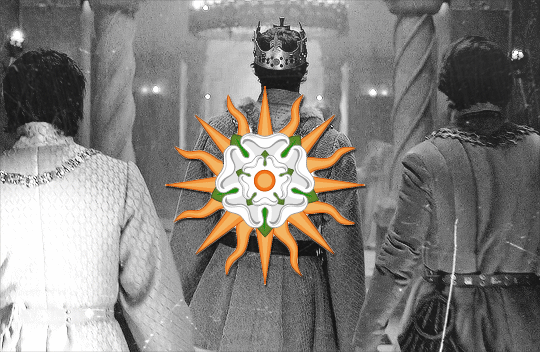
⋆⁺₊⋆ ☀︎☀︎☀︎ ⋆⁺₊⋆ url edit: @threesonsofyorks (I'm back with my bullshit)
RICHARD: Three glorious suns, each one a perfect sun; ...
EDWARD: 'Tis wondrous strange, the like yet never heard of.
I think it cites us, brother, to the field,
That we, the sons of brave Plantagenet,
Each one already blazing by our meeds,
Should notwithstanding join our lights together
And over-shine the earth as this the world.
Whate'er it bodes, henceforward will I bear 665
Upon my target three fair-shining suns.
#George is for sure Regina GEORGE of the 15th century#i love richard's side eye like “bitch don't you dare not today”#hahahha the sudden change of richard's hair#they know it was bad... they're lucky aneurin is pretty#this is my blog's url and im proud#the white queen#richard iii#george duke of clarence#edward iv#aneurin barnard#david okaes#max irons#richardiiiedit#georgeclarenceedit#usersjen#userbennet#userlenna#valyrianpoem#periodramaedit#weloveperioddrama#onlyperioddramas#violaobanion#twqedit#mine#byfefa
270 notes
·
View notes
Photo

Bullet Train
directed by David Leitch, 2022
#Bullet Train#David Leitch#movie mosaics#Brian Tyree Henry#Aaron Taylor-Johnson#Brad Pitt#Hiroyuki Sanada#Benito A. Martínez Ocasio#Bad Bunny#Zazie Beetz#Joey King#Andrew Koji#Masi Oka
75 notes
·
View notes
Text
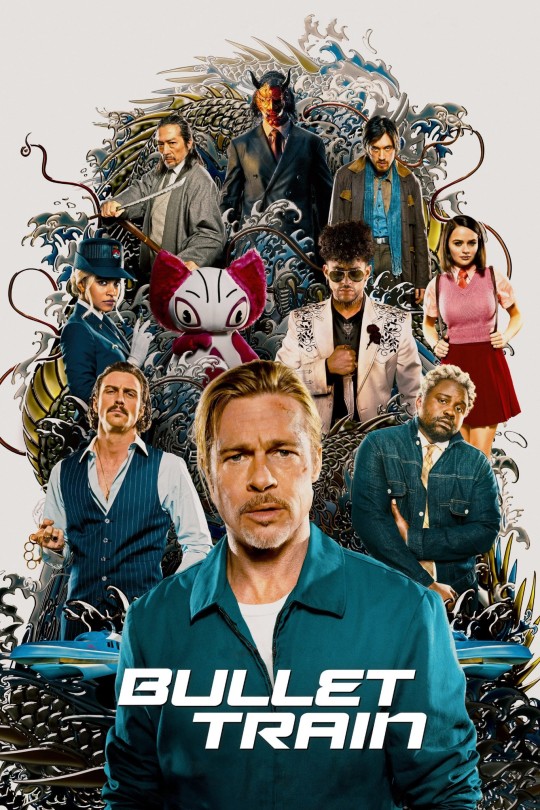

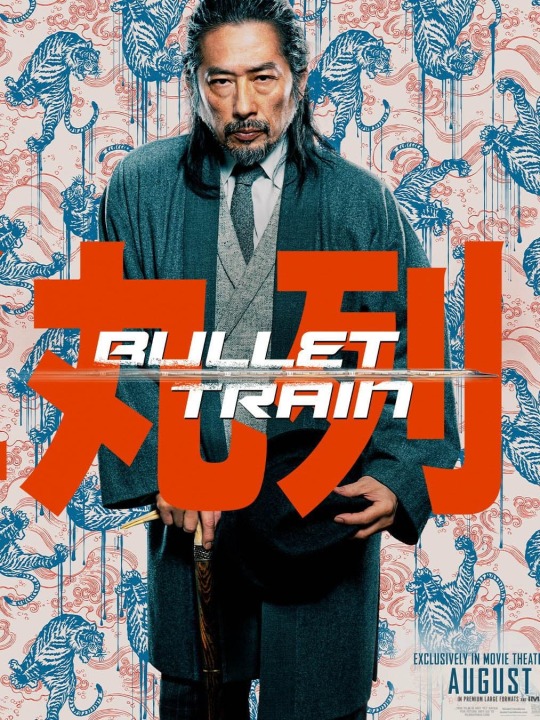



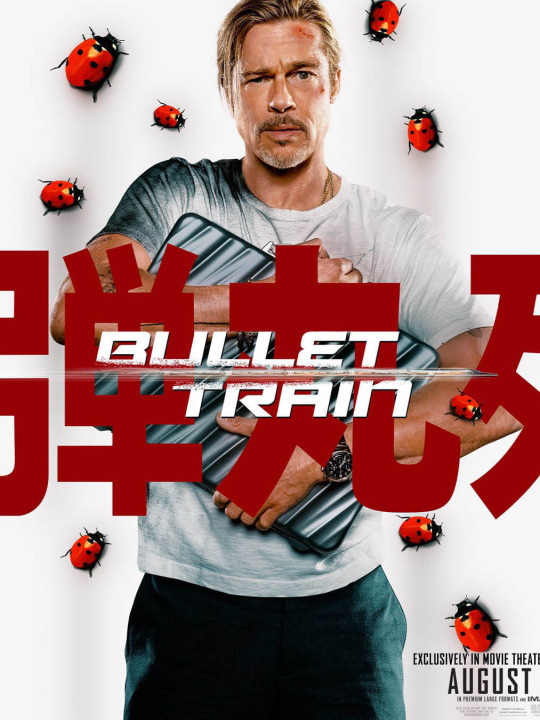

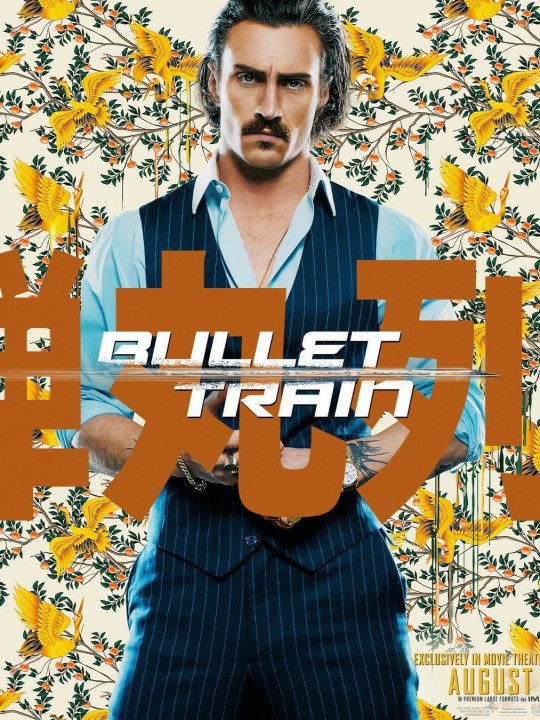
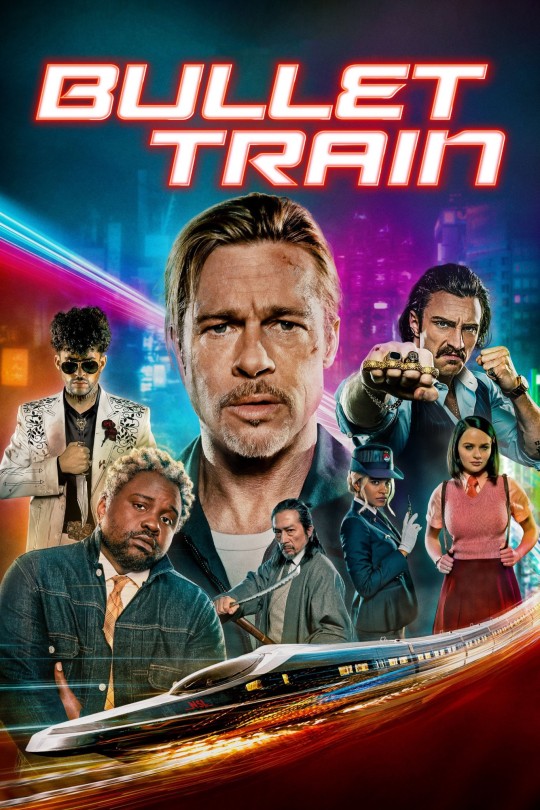
W A T C H E D
#BULLET TRAIN (2022)#BRAD PITT#HIROYUKI SANADA#AARON TAYLOR-JOHNSON#BRIAN TYREE HENRY#ANDREW KOJI#MICHAEL SHANNON#Benito A. Martínez Ocasio#Sandra Bullock#Joey King#Zazie Beetz#Logan Lerman#Bad Bunny#Karen Fukuhara#Masi Oka#Channing Tatum#Ryan Reynolds#DAVID LEITCH#WATCHING#ACTION FILM#ACTION COMEDY#MYSTERY#CRIME FILM#gangsters#yakuza#Russian mafia#assassins#Chinese triad
19 notes
·
View notes
Text

“Bullet Train”
directed by David Leitch
#movies 2022#david leitch#bullet train#brad pitt#sandra bullock#aaron taylor johnson#michael shannon#joey king#brian tyree henry#andrew koji#hiroyuki sanada#bad bunny#zazie beetz#logan lerman#masi oka#karen fukuhara
22 notes
·
View notes
Text
Bullet Train (2022, dir. David Leitch) - review by Rookie-Critic

Bullet Train was fun, pretty funny, and very entertaining. Brad Pitt does a great job in the lead and is backed up by a strong supporting cast, as well, namely Aaron Taylor-Johnson and Brian Tyree Henry. There's a running bit about Thomas the Tank Engine that's pretty hit or miss depending on the person (personally I thought it was hilarious), and Pitt's whole "hitman in therapy" shtick works well. There were a couple of needless characters, a couple of needless scenes, and a handful of narrative beats that, to me, created moments of confusion. I liked this movie, but I didn't love it, and I have seen other movies do this kind of thing much better than this did. Worth the watch, but movies like Smokin' Aces, Copshop, and Bad Times at the El Royale are all better films in this genre. Not to mention most of the classic Guy Ritchie movies that spawned this kind of film in the first place.
Score: 6/10
Currently streaming on Netflix.
#Bullet Train#David Leitch#Brad Pitt#Aaron Taylor-Johnson#Brian Tyree Henry#Sandra Bullock#Joey King#Michael Shannon#Hiroyuki Sanada#Andrew Koji#Bad Bunny#Zazie Beetz#Logan Lerman#Karen Fukuhara#Masi Oka#film review#movie review#2022 films
13 notes
·
View notes
Photo

- I am going to ruin your life the way you ruined mine!
- Dude, I don't even know you!
Bullet Train, David Leitch (2022)
#David Leitch#Zak Olkewicz#Brad Pitt#Joey King#Aaron Taylor Johnson#Brian Tyree Henry#Andrew Koji#Hiroyuki Sanada#Michael Shannon#Sandra Bullock#Benito A Martínez Ocasio#Logan Lerman#Zazie Beetz#Masi Oka#Jonathan Sela#Dominic Lewis#Elísabet Ronaldsdóttir#2022
9 notes
·
View notes
Text
hear me out


#THEY HAVE SIMILAR VIBES OK#they have the same energy#kinda#howl has a redemption arc sorta tho#im watcjing the labyrinth and it came to mind#jareth#howl#oka#also toby reminds me of waldo like whers waldo#i love david bowie
7 notes
·
View notes
Photo

"Bullet Train" (2022)
Directed by David Leitch
(Action/Comedy/Thriller)
#bullet train#2022#david leitch#brad pitt#joey king#aaron taylor johnson#brian tyree henry#bad bunny#zazie beetz#masi oka#hiroyuki mada#film#cinema#cinema title cards
3 notes
·
View notes
Photo

Bullet Train (2022) ☰
#bullet train#David Leitch#2022#Brad Pitt#Joey King#Aaron Taylor-Johnson#Brian Tyree Henry#Andrew Koji#Hiroyuki Sanada#Michael Shannon#Bad Bunny#Sandra Bullock#Zazie Beetz#Masi Oka#Channing Tatum#Ryan Reynolds#azione#thriller#action#movie to see#to watch#film da vedere#da vedere#gif#tokyo
3 notes
·
View notes
Text
'Bullet Train' Zooms Past Sensible Storytelling But Manages to Have Some Fun Along the Way
Bullet Train (CREDIT: Scott Garfield/Sony Pictures)
Starring: Brad Pitt, Joey King, Aaron Taylor-Johnson, Brian Tyree Henry, Andrew Koji, Hiroyuki Sanada, Benito A Martínez Ocasio, Michael Shannon, Sandra Bullock, Zazie Beetz, Logan Lerman, Karen Fukuhara, Masi Oka
Director: David Leitch
Running Time: 126 Minutes
Rating: R for Blood from Guns, Swords, Knives, and Poison
Release Date: August 5,…

View On WordPress
#Aaron Taylor-Johnson#Andrew Koji#Benito A Martínez Ocasio#Brad Pitt#Brian Tyree Henry#Bullet Train#David Leitch#Hiroyuki Sanada#Joey King#Karen Fukuhara#Logan Lerman#Masi Oka#Michael Shannon#Sandra Bullock#Zazie Beetz
2 notes
·
View notes
Text
BULLET TRAIN (2022) ★★★★☆
BULLET TRAIN (2022) ★★★★☆
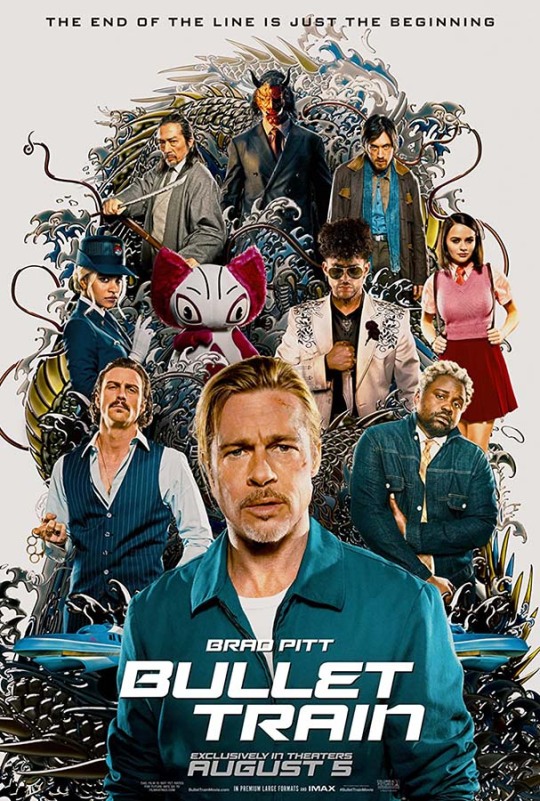
View On WordPress
#Aaron Taylor-Johnson#Andrew Koji#Benito A. Martínez Ocasio#Brad Pitt#Brian Tyree Henry#Channing Tatum#David Leitch#Hiroyuki Sanada#Joey King#Karen Fukuhara#Logan Lerman#Masi Oka#Michael Shannon#Ryan Reynolds#Sandra Bullock#Zazie Beetz
1 note
·
View note
Text
Bullet train: violenza e ritmo sacrificando la qualità
Bullet train: violenza e ritmo sacrificando la qualità
Su un treno giapponese ad altissima velocità viaggia un gruppo di sicari con missioni diverse. Gli assassini non sanno che tutte le loro istruzioni fanno parta di una vendetta. Durante il viaggio le personalità pasticcione e inconsapevoli verranno a galla svelando il mistero. Da un killer sfortunato a una ragazzina mitomane, passando per una coppia di fratelli dal grilletto facile sulla strada…

View On WordPress
#Aaron Taylor-Johnson#Andrew Koji#Arnold Chun#Brad Pitt#Brian Tyree Henry#cinema#David Leitch#Emelina Adams#film#Hiroyuki Sanada#Jason Matthew Smith#Jenson Cheng#Joey King#Karen Fukuhara#Logan Lerman#Masi Oka#Michael Shannon#Michelle Lee#Pasha D. Lychnikoff#Sandra Bullock#Tania Verafield#Warner Bros Italia#Yoshi Sudarso#Zazie Beetz
1 note
·
View note
Text
What Makes an Ethnic Villain "Ethnic" or "Villainous?" How Do You Offset it?
anonymous asked:
Hello WWC! I have a question about the antagonist of my story. She is (currently) Japanese, and I want to make sure I’m writing her in a way that doesn’t associates [sic] her being Asian with being villainous.
The story is set in modern day USA, this character is effectively immortal. She was a samurai who lost loved ones due to failure in combat, and this becomes her character[sic] motivation (portrayed sympathetically to the audience). This story explores many different time periods and how women have shown valor throughout history. The age of the samurai (and the real and legendary female warriors from it) have interested me the most, which is why I want her to be from this period.
The outfit she wears while fighting is based on samurai armor, and she wears modern and traditional Japanese fashion depending on the occasion. She acts pretty similar to modern day people, though more cynical and obsessed with her loss. She’s been able to adapt with the times but still highly values and cherishes her past.
She is the only Asian main character, but I plan to make a supportive Japanese side character. She’s a history teacher who knows about the villain and gives the protagonists information to help them, but isn’t involved in the main plot otherwise.
Are the way I’m writing this villain and the inclusion of a non-antagonist Japanese character enough to prevent a harmful reading of the story, or is there more I should do?
Why Does Your Villain Exist?
This makes me feel old because David Anders plays a villain with this kind of backstory in the series Heroes starring Masi Oka.
I think you want to think about what you mean when you say:
Villainous (In what way? To whom? To what end?)
Harmful (What tropes, narratives and implications are present?)
I’m relatively infamous in the mod circle for not caring too much about dimensions of “harm”. The concept is relative and varies widely between people and cultures. I don’t see much value in framing motivations around “What is less harmful?” I think for me, what matters more is:
“What is more true?”
“Are characteristics viewed as intrinsic to background, or the product of experiences and personal autonomy?”
“Will your portrayal resonate with a large audience?”
“What will resonate with the members of the audience who share the backgrounds your characters have?”
This post offers additional questions you could ask yourself instead of “is this okay/not okay/harmful.”
You could write a story where your antagonist is sly, sadistic, violent and cold-blooded. It may not be an interpretation that will make many Japanese from combat backgrounds feel seen or heard, but it’s not without precedent. These tropes have been weaponized against people of Japanese descent (Like Nikkei Japanese interned during World War II), but Japan also brutalized a good chunk of Asia during World War II. See Herge’s Tintin and The Blue Lotus for an example of a comic that accurately showcases the brutality of Japan’s colonization of Manchuria, but also is racist in terms of how Japanese characters are portrayed (CW: genocide, war, imperialism, racism).
You could also write a story where your character’s grief gives way to despair, and fuels their combat such that they are seen as calculating, frigid and deeply driven by revenge/ violence. This might make sense. It’s also been done to death for Japanese female warriors, though (See “Lady Snowblood” by Kazuo Koike and Kazuo Kamimura here, CW: sexual assault, violence, murder and a host of other dark things you’d expect in a revenge story).
You could further write a story where your antagonist is not necessarily villainous, but the perceived harm comes from fetishizing/ exoticizing elements in how her appearance is presented or how she is sexualized, which is a common problem for Japanese female characters.
My vote always goes to the most interesting story or character. I don’t see any benefit to writing from a defensive position. This is where I'll point out that, culturally, I can't picture a Japanese character viewing immortality as anything other than a curse. Many cultures in Japan are largely defined by transience and the understanding that many things naturally decay, die, and change form.
There are a lot of ways you could conceivably cause harm, but I’d rather hear about what the point of this character is given the dilemma of their position.
What is her purpose for the plot?
How is she designed to make the reader feel?
What literary devices are relevant to her portrayal?
(Arbitrarily, you can always add more than 1 extra Japanese character. I think you might put less pressure on yourself with this character’s portrayal if you have more Japanese characters to practice with in general.)
- Marika.
When Off-Setting: Aim for Average
Seconding the above with regards to this villainess’s story and your motivations for this character, but regardless of her story I think it’s also important to look specifically at how the Japanese teacher character provides contrast.
I agree with the choice to make her a regular person and not a superhero. Otherwise, your one Asian character is aggressively Asian-themed in a stereotypical Cool Japan way (particularly if her villain suit is samurai-themed & she wears wafu clothing every so often). Adding a chill person who happens to be Japanese and doesn’t have some kind of ninja or kitsune motif will be a breath of fresh air (well, more like a sigh of relief) for Japanese readers.
A note on characterization—while our standard advice for “offset” characters is to give your offset character the opposite of the personality trait you’re trying to balance, in this case you might want to avoid opposites. You have a villainess who is a cold, tough “don’t need no man” type. Making the teacher mild-mannered, helpful, and accomodating would balance out the villainess’s traits, but you’ll end up swinging to the other side of the pendulum towards the Submissive Asian stereotype depending on execution. If avoiding stereotypes is a concern, I suggest picking something outside of that spectrum of gentleness to violence and making her really boring or really weird or really nerdy or a jock gym teacher or…something. You’re the author.
Similarly, while the villainess is very traditionally Japanese in her motifs and backstory, don’t make the teacher go aggressively in either direction—give her a nice balance of modern vs. traditional, Japanese vs. Western sensibilities as far as her looks, dress, interests, values, etc. Because at the end of the day, that’s most modern Japanese people.
Sometimes, the most difficult representation of a character of color is making a character who is really average, typical, modern, and boring.
- Rina
#writeblr#Japanese#Japanese women#Villain#antagonist#tokenism#characterization#representation#stereotypes#immortality#superheroes#supervillains#asks
485 notes
·
View notes
Note
Mysteleon be like:
New York. Night. Chameleon's luxurious penthouse. Dima, sitting on a chair outside on the balcony, playing the guitar (kosame no oka - David Mansfield from "Isle of dogs") Enjoying one of the few peaceful moments in his life (later he will suffer)
Quentin, dragging another chair and a bottle of wine: im not falling for this again-
(He's falling for this again)
(forgive me for my English)
Who wouldn’t fall for this, LOL
Also here’s the little doodle. Thank for giving me silly idea

11 notes
·
View notes
Text
Casspoll!
Okay I really had to think about this one and I quickly dipped into the runs I have not touched yet rather than just using their reputations:
Kelley Puckett – It’s Puckett. He created Cass. Some of her very best stories happened here – the first two Shiva fights, delivering a man’s final wishes, Nobody Dies Tonight, Thicker than Water. The absolute heart that Cass cannot allow people to be killed hits hard here. She’s still learning about what a society is.
Dylan Horrocks takes Cass and her growth and lets her mess up and brings Bruce and Barbara more into conflict over what Cass needs, but also allows Cass to be in conflict with them over what she wants. It has the Ivy twofer “The City is a Garden/The City is a Jungle” which I think is Horrocks’ best plot. It has Tough Love, where Bruce and Cass have their conversation over what the Bat means to Cass. It has Cooking the Books, where we see the abrasive side of Barbara’s personality come out and hurt her relationship with Cass. It has Cass taking her first steps into relationships, with her attraction to Tai’Darshan and Kon. It’s a messier, more complicated time.
Andersen Gabrynch has the best conversation of Fresh Blood with Tim over their life goals and their reflections on War Games. He has Destruction’s Daughter/Blood Matters and everything that comes with the culmination of that storyline. He gives Cass her first taste of civilian life. Gabrynch is the ‘how far will Cass go’ writer.
Adam Beechen: you’re all mean! Oh Beechen. He screwed up first time around, no question, but I continue to maintain he did useful things with Cass in Batgirl 2008. He brought in the chance to parallel Slade and Rose’s relationship with David and Cass’. He worked hard to find fixes for the mistakes he made. And if Fresh Blood set up the situation where we saw Tim and Cass become closer and start establishing a sibling-like relationship, then Beechen solidified it to the point that it was expected from that point onwards.
Joe Kelly: oh, Justice League Elite. You are certainly a story. I think the most important thing Kelly actually did in JLE was when Cass stabbed Kendra. It broke her. There is some beautiful writing in JLE surrounding Cass basically sobbing to Bruce over this incident, and Bruce promising her that she doesn’t have to stay undercover, he’ll pull her out, her happiness is more important to him than this mission, and Cass refusing to be extracted. And Ollie remaining there the whole time to keep an eye on Cass on Bruce’s behalf. It’s such a good paternal moment on both Bruce and Ollie’s parts, and they so very rarely get them in concert. It’s also a moment of growth in Cass that is rarely referenced, because as I must repeat, it happens in JUSTICE LEAGUE ELITE.
Bryan Hill: I have heard good things! And immediately on picking it up and going through the first three issues I saw the exact thing I’d enjoyed and wanted more of from Dixon’s 2008 BatO run – Tatsu working with and mentoring Cass – which is a solid recommendation in itself. Will 100% be coming back to this when I get up to this era in my reading.
Becky Cloonan and Michael Conrad: I dipped into #1 and #14. It suffers from the modern era problem of light and bright fluffy content without a solid base behind it. Also the fact that the writers didn’t initially realise that two of the characters they were assigned were ADULTS and were writing them that immaturely is certainly not reassuring. Um. I also know I’m not fully across modern era Cass yet, but #14 seems to miss something that’s basic to my understanding of Cass – talking can be hard but READING is harder. Cass not talking but having reading comprehension showing up constantly? It feels off. (Also I’m fascinated in how an issue like Batgirls #1 manages to be that off while still managing the Cass shower robe scene, which to my eye echoes and references the BatO 2008 Cass shower scene. Suspect they just got lucky and I’m reading too much in)
Mariko Tamaki: okay I have not yet read Shadows of the Bat: The Tower, but I have read Sounds, so I’m basing on that. Tamaki really seems to get Cass, her hand with the character work in Sounds hit some very fundamental parts of Cass’ character and struggles, and I really enjoyed it.
Overlooked: ALYSSA WONG. Wong’s work with Cass in Spirit World not only has been busy recanonising a bunch of things from Batgirl 2000, but is touching on some central aspects of Cass’s view of killing and death in beautiful resonance of things originally established by Puckett. Also it’s given Cass some narrative space back on her own, and while I think Cass’s relationship with Steph is important, I also think she’s more functional and useful to DC writers when she’s not assumed to be part of an automatic pair.
Plus a plug for Scott Snyder for Gates of Gotham and giving us proper insight into the Reborn era Cass relationships with her brothers.
46 notes
·
View notes
Text

Bibliography
Emily Achtenberg, “Community Organizing and Rebellion: Neighborhood Councils in El Alto, Bolivia,” Progressive Planning, No.172, Summer 2007.
Ackelsberg, Martha A., Free Women of Spain: Anarchism and the Struggle for the Emancipation of Women, Bloomington, IN: Indiana University Press, 1991.
William M. Adams and David M. Anderson, “Irrigation Before Development: Indigenous and Induced Change in Agricultural Water Management in East Africa,” African Affairs, 1998.
AFL-CIO “Facts About Worker Safety and Health 2007.” www.aflcio.org [viewed January 19, 2008]
Gemma Aguilar, “Els Okupes Fan la Feina que Oblida el Districte,” Avui, Saturday, December 15, 2007.
Michael Albert, Parecon: Life After Capitalism, New York: Verso, 2003
Michael Albert, “Argentine Self Management,” ZNet, November 3, 2005.
Anyonymous, “Longo Maï,” Buiten de Orde, Summer 2008.
Anonymous, “Pirate Utopias,” Do or Die, No. 8, 1999.
Anonymous, “The ‘Oka Crisis’ ” Decentralized publication and distribution, no date or other publishing information included.
Anonymous, “You Cannot Kill Us, We Are Already Dead.” Algeria’s Ongoing Popular Uprising, St. Louis: One Thousand Emotions, 2006.
Stephen Arthur, “‘Where License Reigns With All Impunity:’ An Anarchist Study of the Rotinonshón:ni Polity,” Northeastern Anarchist, No.12, Winter 2007. nefac.net
Paul Avrich, The Russian Anarchists, Oakland: AK Press, 2005.
Paul Avrich, The Modern School Movement: Anarchism and Education in the United States, Oakland: AK Press, 2005.
Roland H. Bainton, “Thomas Müntzer, Revolutionary Firebrand of the Reformation.” The Sixteenth Century Journal 13.2 (1982): 3–16
Jan Martin Bang, Ecovillages: A Practical Guide to Sustainable Communities. Edinburgh: Floris Books, 2005.
Harold Barclay, People Without Government: An Anthropology of Anarchy, London: Kahn and Averill, 1982.
David Barstow, “U.S. Rarely Seeks Charges for Deaths in Workplace,” New York Times, December 22, 2003.
Eliezer Ben-Rafael, Crisis and Transformation: The Kibbutz at Century’s End, Albany: State University of New York Press, 1997.
Jamie Bissonette, When the Prisoners Ran Walpole: A True Story in the Movement for Prison Abolition, Cambridge: South End Press, 2008.
Christopher Boehm, “Egalitarian Behavior and Reverse Dominance Hierarchy,” Current Anthropology, Vol. 34, No. 3, June 1993.
Dmitri M. Bondarenko and Andrey V. Korotayev, Civilizational Models of Politogenesis, Moscow: Russian Academy of Sciences, 2000.
Franz Borkenau, The Spanish Cockpit, London: Faber and Faber, 1937.
Thomas A. Brady, Jr. & H.C. Erik Midelfort, The Revolution of 1525: The German Peasants’ War From a New Perspective. Baltimore: The Johns Hopkins University Press, 1981.
Jeremy Brecher, Strike! Revised Edition. Boston: South End Press, 1997.
Stuart Christie, We, the Anarchists! A study of the Iberian Anarchist Federation (FAI) 1927–1937, Hastings, UK: The Meltzer Press, 2000.
CIPO-RFM website, “Our Story,” www.nodo50.org [viewed November 6, 2006]
Eddie Conlon, The Spanish Civil War: Anarchism in Action, Workers’ Solidarity Movement of Ireland, 2nd edition, 1993.
CrimethInc., “The Really Really Free Market: Instituting the Gift Economy,” Rolling Thunder, No. 4, Spring 2007.
The Curious George Brigade, Anarchy In the Age of Dinosaurs, CrimethInc. 2003.
Diana Denham and C.A.S.A. Collective (eds.), Teaching Rebellion: Stories from the Grassroots Mobilization in Oaxaca, Oakland: PM Press, 2008.
Robert K. Dentan, The Semai: A Nonviolent People of Malaya. New York: Holt, Rinehart and Winston, 1979.
Jared Diamond, Collapse: How Societies Choose to Fail or Succeed, New York, Viking, 2005.
Dissent! Network “The VAAAG: A Collective Experience of Self-Organization,” www.daysofdissent.org.uk [viewed January 26, 2007]
Sam Dolgoff, The Anarchist Collectives, New York: Free Life Editions, 1974.
George R. Edison, MD, “The Drug Laws: Are They Effective and Safe?” The Journal of the American Medial Association. Vol. 239 No.24, June 16, 1978.
Martyn Everett, War and Revolution: The Hungarian Anarchist Movement in World War I and the Budapest Commune (1919), London: Kate Sharpley Library, 2006.
Patrick Fleuret, “The Social Organization of Water Control in the Taita Hills, Kenya,” American Ethnologist, Vol. 12, 1985.
Heather C. Flores, Food Not Lawns: How To Turn Your Yard Into A Garden And Your Neighborhood Into A Community, Chelsea Green, 2006.
The Freecycle Network, “About Freecycle,” www.freecycle.org [viewed January 19 2008].
Peter Gelderloos, Consensus: A New Handbook for Grassroots Social, Political, and Environmental Groups, Tucson: See Sharp Press, 2006.
Peter Gelderloos and Patrick Lincoln, World Behind Bars: The Expansion of the American Prison Sell, Harrisonburg, Virginia: Signalfire Press, 2005.
Malcolm Gladwell, The Tipping Point: How Little Things Can Make a Big Difference. New York: Little, Brown, and Company, 2002.
Amy Goodman, “Louisiana Official: Federal Gov’t Abandoned New Orleans,” Democracy Now!, September 7, 2005.
Amy Goodman, “Lakota Indians Declare Sovereignty from US Government,” Democracy Now!, December 26, 2007.
Natasha Gordon and Paul Chatterton, Taking Back Control: A Journey through Argentina’s Popular Uprising, Leeds (UK): University of Leeds, 2004.
Uri Gordon, Anarchy Alive! Anti-authoritarian Politics from Practice to Theory, London: Pluto Press, 2008.
David Graeber, Fragments of an Anarchist Anthropology, Chicago: Prickly Paradigm Press, 2004.
David Graeber, “The Shock of Victory,” Rolling Thunder no. 5, Spring 2008.
Evan Henshaw-Plath, “The People’s Assemblies in Argentina,” ZNet, March 8, 2002.
Neille Ilel, “A Healthy Dose of Anarchy: After Katrina, nontraditional, decentralized relief steps in where big government and big charity failed,” Reason Magazine, December 2006.
Inter-Press Service, “Cuba: Rise of Urban Agriculture,” February 13, 2005.
Interview with Marcello, “Criticisms of the MST,” February 17, 2009, Barcelona.
Derrick Jensen, A Language Older Than Words, White River Junction, Vermont: Chelsea Green Publishing Company, 2000.
John Jordan and Jennifer Whitney, Que Se Vayan Todos: Argentina’s Popular Rebellion, Montreal: Kersplebedeb, 2003.
Michael J. Jordan, “Sex Charges haunt UN forces,” Christian Science Monitor, November 26, 2004.
George Katsiaficas, The Subversion of Politics: European Autonomous Social Movements and the Decolonization of Everyday Life. Oakland: AK Press, 2006.
George Katsiaficas, “Comparing the Paris Commune and the Kwangju Uprising,” www.eroseffect.com [viewed May 8, 2008]
Lawrence H. Keeley, War Before Civilization. Oxford: Oxford University Press, 1996.
Roger M. Keesing, Andrew J. Strathern, Cultural Anthropology: A Contemporary Perspective, 3rd Edition, New York: Harcourt Brace & Company, 1998.
Graham Kemp and Douglas P. Fry (eds.), Keeping the Peace: Conflict Resolution and Peaceful Societies around the World, New York: Routledge, 2004.
Elli King, ed., Listen: The Story of the People at Taku Wakan Tipi and the Reroute of Highway 55, or, The Minnehaha Free State, Tucson, AZ: Feral Press, 1996.
Aaron Kinney, “Hurricane Horror Stories,” Salon.com October 24, 2005.
Peter Kropotkin, Fields, Factories and Workshops Tomorrow, London: Freedom Press, 1974.
Wolfi Landstreicher, “Autonomous Self-Organization and Anarchist Intervention,” Anarchy: a Journal of Desire Armed. No. 58 (Fall/Winter 2004–5), p. 56
Gaston Leval, Collectives in the Spanish Revolution, London: Freedom Press, 1975 (translated from the French by Vernon Richards).
A.W. MacLeod, Recidivism: a Deficiency Disease, Philadelphia: University of Pennsylvania Press, 1965.
Alan MacSimoin, “The Korean Anarchist Movement,” a talk in Dublin, September 1991.
Sam Mbah and I.E. Igariway, African Anarchism: The History of a Movement, Tucson: See Sharp Press, 1997.
The Middle East Media Research Institute, “Algerian Berber Dissidents Promote Programs for Secularism and Democracy in Algeria,” Special Dispatch Series No. 1308, October 6, 2006, memri.org
George Mikes, The Hungarian Revolution, London: Andre Deutsch, 1957.
Cahal Milmo, “On the Barricades: Trouble in a Hippie Paradise,” The Independent, May 31, 2007.
Bonnie Anna Nardi, “Modes of Explanation in Anthropological Population Theory: Biological Determinism vs. Self-Regulation in Studies of Population Growth in Third World Countries,” American Anthropologist, vol. 83, 1981.
Nathaniel C. Nash, “Oil Companies Face Boycott Over Sinking of Rig,” The New York Times, June 17, 1995.
Oscar Olivera, Cochabamba! Water Rebellion in Bolivia, Cambridge: South End Press, 2004.
George Orwell, Homage to Catalonia, London: Martin Secker & Warburg Ltd., 1938.
Oxfam America, “Havana’s Green Revelation,” www.oxfamamerica.org [viewed December 5, 2005]
Philly’s Pissed, www.phillyspissed.net [viewed May 20, 2008]
Daryl M. Plunk, “South Korea’s Kwangju Incident Revisited,” The Heritage Foundation, No. 35, September 16, 1985.
Rappaport, R.A. (1968), Pigs for the Ancestors: Ritual in the Ecology of a New Guinea People. New Haven: Yale University Press.
RARA, Revolutionaire Anti-Racistische Actie Communiqués van 1990–1993. Gent: 2004.
Revolutionary Association of Women of Afghanistan “About RAWA,” www.rawa.org Viewed June 22, 2007
James C. Scott, Seeing Like a State: How Certain Schemes to Improve the Human Condition Have Failed, New Haven: Yale University Press, 1998.
James C. Scott, “Civilizations Can’t Climb Hills: A Political History of Statelessness in Southeast Asia,” lecture at Brown University, Providence, Rhode Island, February 2, 2005.
Jaime Semprun, Apología por la Insurrección Argelina, Bilbao: Muturreko Burutazioak, 2002 (translated from French to Spanish by Javier Rodriguez Hidalgo).
Nirmal Sengupta, Managing Common Property: Irrigation in India and The Philippines, New Delhi: Sage, 1991.
Carmen Sirianni, “Workers Control in the Era of World War I: A Comparative Analysis of the European Experience,” Theory and Society, Vol. 9, 1980.
Alexandre Skirda, Nestor Makhno, Anarchy’s Cossack: The Struggle for Free Soviets in the Ukraine 1917–1921, London: AK Press, 2005.
Eric Alden Smith, Mark Wishnie, “Conservation and Subsistence in Small-Scale Societies,” Annual Review of Anthropology, Vol. 29, 2000, pp. 493–524.
“Solidarity with the Communities of CIPO-RFM in Oaxaca,” Presentation at the Montreal Anarchist Bookfair, Montreal, May 21, 2006.
Georges Sossenko, “Return to the Spanish Civil War,” Presentation at the Montreal Anarchist Bookfair, Montreal, May 21, 2006.
Jac Smit, Annu Ratta and Joe Nasr, Urban Agriculture: Food, Jobs and Sustainable Cities, UNDP, Habitat II Series, 1996.
Melford E. Spiro, Kibbutz: Venture in Utopia, New York: Schocken Books, 1963.
“The Stonehenge Free Festivals, 1972–1985.” www.ukrockfestivals.com [viewed May 8, 2008].
Dennis Sullivan and Larry Tifft, Restorative Justice: Healing the Foundations of Our Everyday Lives, Monsey, NY: Willow Tree Press, 2001.
Joy Thacker, Whiteway Colony: The Social History of a Tolstoyan Community, Whiteway, 1993.
Colin Turnbull, The Mbuti Pygmies: Change and Adaptation. Philadelphia: Harcourt Brace College Publishers, 1983.
Marcele Valente, “The Rise and Fall of the Great Bartering Network in Argentina.” Inter-Press Service, November 6, 2002.
Judith Van Allen “‘Sitting On a Man’: Colonialism and the Lost Political Institutions of Igbo Women.” Canadian Journal of African Studies. Vol. ii, 1972. 211–219.
Johan M.G. van der Dennen, “Ritualized ‘Primitive’ Warfare and Rituals in War: Phenocopy, Homology, or...?” rechten.eldoc.ub.rug.nl
H. Van Der Linden, “Een nieuwe overheidsinstelling: het waterschap circa 1100–1400” in D.P. Blok, Algemene Geschiednis der Nederlanden, deel III. Haarlem: Fibula van Dishoeck, 1982, pp. 60–76
Wikipedia, “Asamblea Popular de los Pueblos de Oaxaca,” en.wikipedia.org /wiki/APPO [viewed November 6, 2006]
Wikipedia, “The Freecycle Network,” en.wikipedia.org [viewed January 19, 2008]
Wikipedia, “Gwangju massacre,” en.wikipedia.org [viewed November 3, 2006]
Wikipedia, “The Iroquois League,” en.wikipedia.org [viewed June 22, 2007]
William Foote Whyte and Kathleen King Whyte, Making Mondragon: The Growth and Dynamics of the Worker Cooperative Complex, Ithaca, New York: ILR Press, 1988.
Kristian Williams, Our Enemies in Blue. Brooklyn: Soft Skull Press, 2004.
Peter Lamborn Wilson, Pirate Utopias, Brooklyn: Autonomedia, 2003.
Daria Zelenova, “Anti-Eviction Struggle of the Squatters Communities in Contemporary South Africa,” paper presented at the conference “Hierarchy and Power in the History of Civilizations,” at the Russian Academy of Sciences, Moscow, June 2009.
Howard Zinn, A People’s History of the United States. New York: Perrenial Classics Edition, 1999.
#recommended reading#reading list#book list#book recs#organization#revolution#anarchism#daily posts#communism#anti capitalist#anti capitalism#late stage capitalism#anarchy#anarchists#libraries#leftism#social issues#economy#economics#climate change#anarchy works#environmentalism#environment#solarpunk#anti colonialism#acab
4 notes
·
View notes